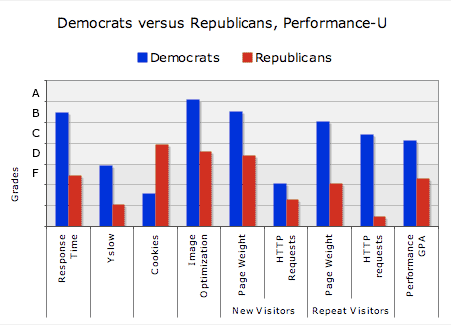Esther Dyson wrote about a really interesting area of the advertising market in an article for The Wall Street Journal.
She’s talking about user behavior data arbiters, companies that capture what users are doing on the Internet through ISPs and sell that data to advertisers.
These companies put tracking software between the ISP and a user’s HTTP requests. They then build dynamic and anonymous profiles for each user. NebuAd, Project Rialto, Phorm, Frontporch and Adzilla are among several companies competing for space on ISPs’ servers. And there’s no shortage of ad networks who will make use of that data to improve performance.
Esther gives an example:
“Take user number 12345, who was searching for cars yesterday, and show him a Porche ad. It doesn’t matter if he’s on Yahoo! or MySpace today — he’s the same number as yesterday. As an advertiser, would you prefer to reach someone reading a car review featured on Yahoo! or someone who visited two car-dealer sites yesterday?”
Behavioral and demographic targeting is going to become increasingly important this year as marketers shift budgets away from blanket branding campaigns toward direct response marketing. Over the next few years advertisers plan to spend more on behavioral, search, geographic, and demographic targeting, in that order, according to Forrester. AdWeek has been following this trend:
“According to the Forrester Research report, marketer moves into areas like word of mouth, blogging and social networking will withstand tightened budgets. In contrast, marketers are likely to decrease spending in traditional media and even online vehicles geared to building brand awareness.”
We tried behavioral targeting campaigns back at InfoWorld.com with mild success using Tacoda. The main problem was traffic volume. Though performance was better than broad content-targeted campaigns, the target segments were too small to sell in meaningful ways. The idea of an open exchange for auctioning inventory might have helped, but at the time we had to sell what we called “laser targeting” in packages that started to look more like machine gun fire.
This “edge targeting” market, for lack of a better term, is very compelling. It captures data from a user’s entire online experience rather than just one web site. When you know what a person is doing right now you can make much more intelligent assumptions about their intent and, therefore, the kinds of things they might be more interested in seeing.
It’s important to emphasize that edge targeting doesn’t need to know anything personally identifiable about a person. ISP’s legally can’t watch what known individuals are doing online, and they can’t share anything they know about a person with an advertiser. AdWeek discusses the issue of advertising data optimization in a report title “The New Gold Standard“:
“As it stands now, consumers don’t have much control over their information. Direct marketing firms routinely buy and sell personal data offline, and online, ad networks, search engines and advertisers collect reams of information such as purchasing behavior and Web usage. Google, for instance, keeps consumers’ search histories for up to two years, not allowing them the option of erasing it.
Legalities, however, preclude ad networks from collecting personally identifiable information such as names and addresses. Ad networks also allow users to opt out of being tracked.”
Though a person is only identified as a number in edge targeting, that number is showing very specific intent. That intent, if profiled properly, is significantly more accurate than a single search query at a search engine.
I suspect this is going to be a very important space to watch in the coming years.
 They had a fully catered event including an open bar with some good whiskey. The schwag bag included the Flip digital video camera (wow!). There were a small handful of very basic demos on the floor from the usual suspects (Slide, iLike, Flixster, etc.). And the presentation was short and sweet so we could get back to socializing.
They had a fully catered event including an open bar with some good whiskey. The schwag bag included the Flip digital video camera (wow!). There were a small handful of very basic demos on the floor from the usual suspects (Slide, iLike, Flixster, etc.). And the presentation was short and sweet so we could get back to socializing.